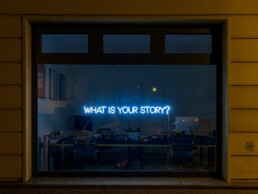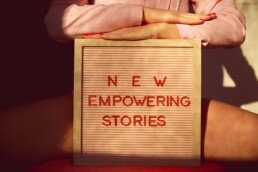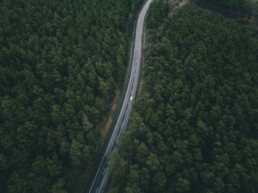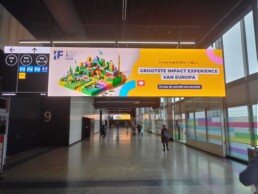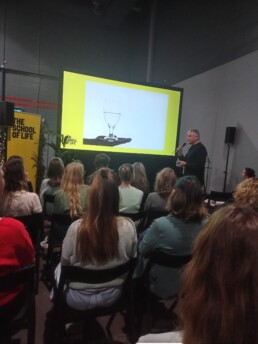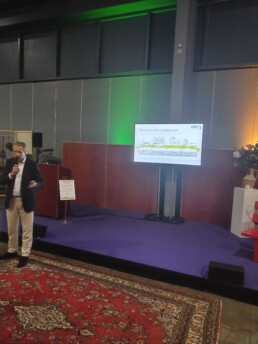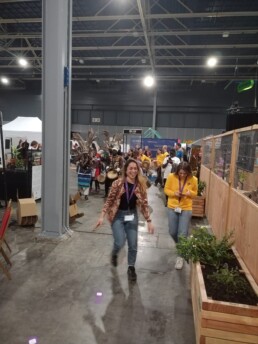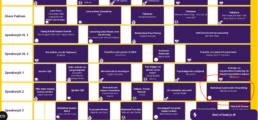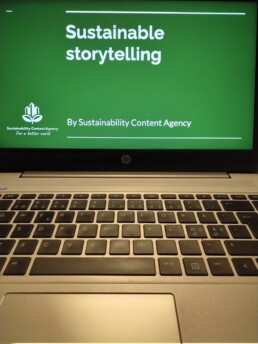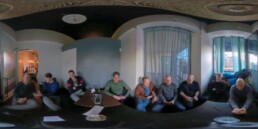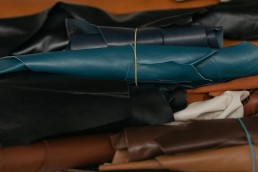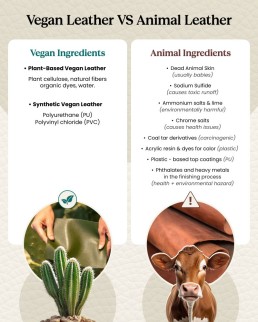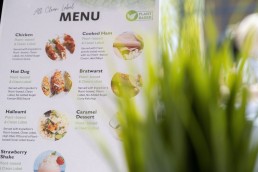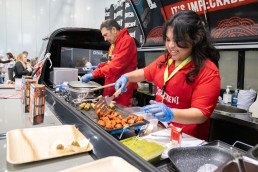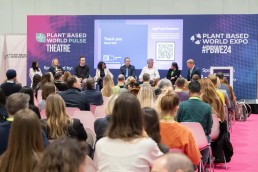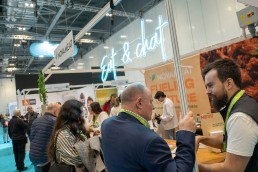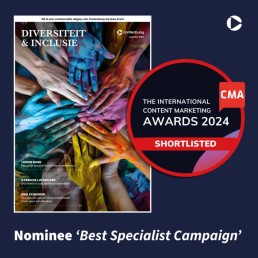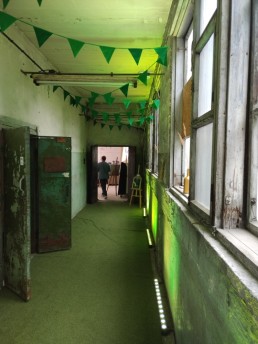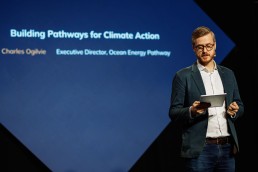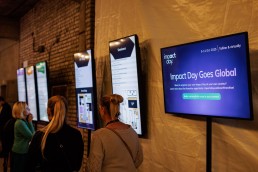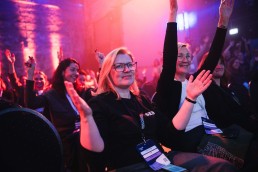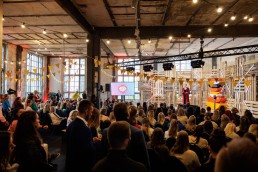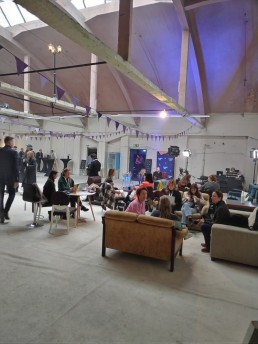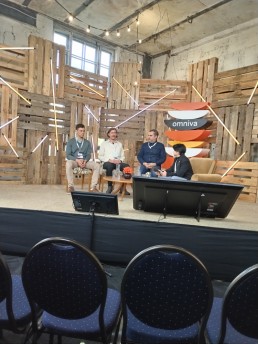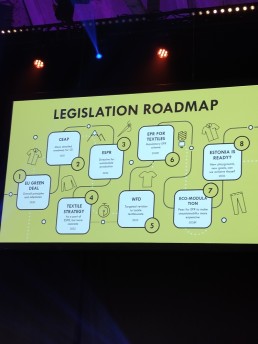How do you convey your message in a changing world?
English
Talking about the climate and making a personal contribution is no longer the preserve of a small group of people. In the past, they were called tree huggers or climate fanatics.
Nowadays, if you don’t have solar panels, you’re not really participating.
If you don’t eat vegetarian or vegan meals from time to time, you’re not really health-conscious.
If you don’t drive an electric car, you’ve really missed out.
If you only buy fast fashion, you’re not thinking things through.
If you read the above statements, which may be a bit exaggerated here and there, things are actually going quite well.
It starts with a shift in thinking. People inspiring each other. Even if it may not come entirely from within, things are moving.
The facts don’t lie. We can’t be truly positive about the climate, but approaching it with optimism is something to think about. Providing objective information is also important, without making people feel cornered. You’re dealing with ingrained habits.
Research shows that it’s actually not such a good idea to constantly show how vegan, environmentally conscious or impact-driven you are. It’s simply one of your unique selling points. You’re still mainly selling a product or service, not a climate benefit.
Want to communicate sustainability and social impact more effectively? At Sustainability Content Agency, we help you do just that, in almost all European languages.
Just send a message to info@sustainabilitycontentagency.com or book a quick 15-minute call via Calendly to discuss your needs.
Pictures by Andreas Kind (road in forest), Etienne Girardet (What is your story?) and Ava Sol (New empowering stories).
Impact Fair in Utrecht
English
5 reasons why you should go to the Impact Fair
Organizer Micha van Hoorn and his team are busy with the final preparations to ensure that everything runs smoothly when the Impact Fair in Utrecht (Holland) starts. Organizing such an event is quite a roller coaster: a two-day trade fair followed by an open day on the Saturday. But it’s worth the effort! What are the top 5 reasons to come to Utrecht on April 3, 4 or 5, in his opinion?
1. Learn
We have a great program with 140 speakers spread over 7 stages. Based on practical tips, tricks and tools, our visitors discover how they can get started today with the world of tomorrow. They do this by sharing their knowledge and inspiring others in various impact domains, in the broadest sense of the word. You can learn more about a sustainable economy, but also, for example, how to cook healthier.
2. Meet
Every impact agenda indicates that we need to accelerate. How do you do that? By working together more. But to do that properly, you first have to get to know each other. At the Impact Fair, we facilitate meaningful meetings where people can discuss how they can strengthen each other and make a greater impact together. There will be meet-ups, speed dating sessions, dating shows, guided tours and networking drinks. Everything is designed to maximize introductions and connections. We also have a great app where you can connect with each other. All parties are present: we connect leaders, young people, engaged citizens, government, social enterprises, corporates, NGOs, SMEs, educators, associations and funds. In short, representatives from all sectors of society will be there.
3. Do
There are 108 interactive experiences that let visitors discover how they can make more of an impact. We are the only impact experience center in the world and certainly the largest in Europe. You can take immediate action to make the world a better place. Think about planting trees, cleaning up litter, recipes for vegetarian or plant-based cooking, playing serious games, going to a pop-up cinema or experiencing the overview effect with VR. All activities that you can do right away to make a positive contribution. The exhibitors also tell their mission-driven story in an interactive way, which makes it easier to understand and remember. And last but not least: experiencing something firsthand makes you more likely to share it with others.
4. Leadership
This year, for the first time, we have a Leaders xCHANGE, which is all about doing business with impact. How can your company be a force for good? How can you ensure that you will stand out as a force for good and commit to the SDG ambitions, for example? The very top of the business community will be present. The economy continues to play a major role in the whole. How can you make doing good financially attractive? You can talk to more than 400 leaders about how to do business with a positive impact. In this way, the most influential group in the Netherlands can transform into the most impactful group our country has ever seen.
5. Movement
We really are a movement. We are all committed to the future of the world. Your impact should be positive and meaningful. It should be fun and cheerful. The so-called positive impact. There are many organizations that stand for this. We set the agenda, but we do so in an optimistic way. We show how much fun it is to do good. That approach to marketing and messaging will help us reach a wider audience. We want to become a ‘household name for impact makers’. This strategy will also bring us more quickly to the social tipping point that prominent sustainability scientist Jan Rotmans talks about so much: once you have persuaded 25% of a group to change, that becomes the norm. That is 4.5 million people in the Netherlands. By attending the Impact Fair, you take the first step in becoming a changemaker.
Interview: Michel de Ruyter – Sustainable Content Agency
Sustainability Content Agency will be hosting a workshop on Sustainable Storytelling at the Impact Fair on Friday afternoon, April 4, from 2:30 to 3:30 p.m. For the full schedule of all three days, please visit (only in Dutch): https://impactfairnederland.nl/academy/#blokkenschema.
Workshop Sustainable Storytelling
English
In January 2025 Sustainability Content Agency hosted a Sustainable Storytelling workshop for entrepreneurs and managers, which is part of our services.
The session was so interactive that we didn’t even get to the actual writing exercise.
This workshop is designed for companies, organizations, freelancers, and individuals focused on sustainability, social impact, and health — or anyone looking to highlight these topics more effectively in their work.
How do you craft your message in a changing world? By combining interaction with hands-on practice, participants leave better equipped within just a few hours.
Workshops are held at events or online (in English or Dutch) in small groups of 4-8 people, ensuring everyone gets time to share their story and dive straight to the core.
Dates and details for upcoming workshops will be announced soon!
Want to learn more now? Book a meeting via Calendly or send an email to info@sustainabilitycontentagency.com.
Picture by jefunne gimpel
♻️ Are you working in the sustainability, social impact or health space, and sometimes need help with your content and/or visuals?
💚 At Sustainability Content Agency, we only work with copywriters, translators, designers and linguists who, like you, are committed to making the world a better place.
📢 Just drop us a line to see if we can cooperate together. We love every job, big or small.
How unethical is the animal leather industry?
English
The market size of global leather goods was valued at USD 440.64 billion in 2022 and is projected to grow from USD 468.49 billion in 2023 to a staggering USD 738.61 billion by 2030.
The manufacturing of leather has significant environmental impacts and sustainability challenges, with the main environmental concerns being associated with the use of hazardous chemicals, high water usage, air and water pollution, and deforestation.
Leather is seen as a by-product of agriculture. Without livestock raised for food, we would have no hides or skins to make it. But that is exactly the issue.
In 2023, agriculture was responsible for around 11 percent of global GHG emissions. The sector is also the largest anthropogenic source of methane. Methane is the second most abundant greenhouse gas after carbon dioxide (CO2), accounting for about 16 percent of global emissions. It also has a much higher warming potential compared to CO2.
It’s obvious the agricultural industry has to reform drastically. This will be a matter of decades, but it has to happen. Governments are more aware of how serious the problems are, but there is basically no time to waste. Policies around agricultural practices must take into account the effects of soil degradation, water contamination, use of pesticides, and impact on climate change.
This also includes the ethical concerns surrounding the slaughter of animals.
If these are not implemented, there are potentially devastating future consequences.
Let’s take a look at the alternatives to leather. Because there are plenty.
Vegan leather vs. animal leather: which is truly sustainable?
The leather industry might say vegan leather is ‘just plastic’ and therefore unsustainable. But what actually goes into both vegan leather and animal leather?
On one side, we have vegan leather options like mushroom, cactus, pineapple, and other innovative plant-based alternatives. Even if it’s synthetic, the process and impact are drastically different from animal leather. Also cork from the cork tree is a vegan and sustainable alternative. Cork comes from the bark of the cork oak tree, which is primarily found in Mediterranean countries such as Spain, Portugal, and Italy. The bark is harvested every 9-12 years, and the process does not harm the tree. Therefore it is a renewable resource and also biodegradable.
On the other side, we have animal leather – a material that’s marketed as a ‘natural by-product’. But how natural is it really when it goes through layers of processing, chemical treatments, dyes, and preservatives?
Here is a breakdown of their processes:
Vegan leather:
1. Plant-based (e.g., cactus, mushroom, pineapple): plant cellulose, natural fibers, organic dyes, water.
2. Synthetic: polyurethane (PU) or polyvinyl chloride (PVC) – both can be controlled for reduced environmental impact, with PU being less damaging than PVC.
Animal leather:
1. Animal hide (sourced from cruel and unsustainable agriculture).
2. Sodium sulfide (to remove hair).
3. Ammonium salts and lime (for softening).
4. Formaldehyde (a known carcinogen).
5. Chrome salts (a highly toxic substance).
6. Coal tar derivatives.
7. Acrylic resins and dyes for color.
8. Plastic-based top coatings (animal leather has often plastic finishes too).
9. Phthalates and heavy metals in the finishing process.
The above image and process details are borrowed with permission from Shreya Ghodawat. She is a sustainability strategist and consultant, vegan entrepreneur, podcast host, gender and climate activist and keynote speaker from India.
It is clear that the question is no longer which processes are more sustainable.
Vegan leather doesn’t rely on animal agriculture – a leading cause of deforestation, greenhouse gas emissions, biodiversity loss and animal cruelty. And while plant-based and synthetic versions of course also have a footprint, the rise of these solutions offers sustainable alternatives that avoid both cruelty and toxicity.
The leather industry as we know it today is anything but sustainable.
Plant Based World Expo 2024 in London
English
On 13-14 November 2024, SCA was at the Plant Based World Expo Europe in London. The future of plant-based food is not in 2030 or 2050. It’s now.
But sure, there are challenges. For example, in cultivated meat — once far too expensive to buy, but now closer than ever to reaching home plates. During the panel discussion about this subject with Riley Jackson, Billy Nicholles, Joseph Saine, and Annie Conde, they discussed complexities with regulations, including those around building plants. In the UK, procedures can take around 2 years, while in Europe, it may take even up to 4–5 years. Moreover, costs need to be monitored better, as this is where things have regularly gone wrong in the past. It’s still early days, but the market is developing.
On the second day, another discussion focused on dairy. The panel, moderated by Indy Kaur, included Mitch Lee 🧀, Tim Knight, Helen Hartley, and Ali Morpeth (RNutr). There is a lot of misinformation in this sector, including claims that the nutritional value is not the same as regular milk. Nonetheless, the market for plant-based milk is developing at a steady pace (estimates are approx. 7.5% growth per year until 2030). Morpeth emphasized the importance of educating consumers and making them part of a bigger picture based on sustainability. Plant-based is healthy for both your body and the planet — two facts you can no longer ignore.
Mitch Lee, a familiar face on LinkedIn within the plant-based community, is involved in the sales of plant-based cheeses on behalf of Purezza, Europe’s first 100% plant-based pizzeria, and La Fauxmagerie. He said first impressions matter. You don’t have to shout about it; as a restaurant chain, you can incorporate vegan cheese into your products without consumers noticing a difference in taste. As long as it is listed under the ingredients and your product is good, it’s not a big deal.
What are the priorities for the plant-based future in retail? Simon Hurley, John O’Connor, Erik van Gangelen, and Tomas Kofron tackled this subject. Thinking outside the box was one of the key points raised. But new variants of the good old tofu and tempeh can also play a significant role in the food transition. If you have a good product, there is usually a market for it. Again, the importance of raising awareness was highlighted. The responsibility lies not only with the government but also within the market. Companies’ targets around reducing CO2 emissions play a prominent role and will eventually work in favor of companies already working sustainably.
The last talking session was with my wife, Sophie Shand 🌸🌱 of Design Studio Flora 🌸 and Marlana Malerich of Rooted Research Collective after the event, which was a nice ending. If you need help with your designs or food consultancy, contact them.
Sustainability Content Agency writes about sustainability and for sustainable organizations, in almost all European languages.
The Content Marketing Association
English
One of the nicest editions of magazines from Contentway B.V. that I had the pleasure of working on, titled Diversity & Inclusion, has been nominated for an award from The Content Marketing Association. The magazines are distributed with various national media, in this case Het Financieele Dagblad.
Diversity and inclusion are topics that cannot be discussed enough, and reputable companies are leading the way. Read stories about their D&I policies here (only in Dutch): https://lnkd.in/eMva5HQf.
Contentway creates campaigns about specific topics in cooperation with various national news outlets, so contact them if you want to showcase your activities to a large audience (250,000+ readers). Congratulations to Eltjo Nieuwenhuis (head editor), Jelle Stekelbos (campagne manager) and Kiloe Van Benthem (design) and all fellow journalists with this wonderful publication and the nomination.
♻️ Are you working in the sustainability, social impact or health space, and sometimes need help with your content and/or visuals?
💚 At Sustainability Content Agency, we only work with copywriters, translators, designers and linguists who, like you, are committed to making the world a better place.
📢 Just drop us a line to see if we can cooperate together. We love every job, big or small.
Impact Day in Tallinn
English
Sustainability Content Agency is now ambassador of Impact Day, the largest impact and sustainability festival in the Baltics and Nordics. Last week, from 10-12 October, I was there for the first time, in beautiful Tallinn. Organized for the third time, the main topic of this year was ‘Less Is More’.
It took little effort to get into it, as the first two sessions on the main stage were presented by fellow Dutch countrymen, Jos De Blok of Buurtzorg Nederland and Kim Schoppink of the Science Based Targets initiative (SBTi). The name Buurtzorg was familiar to me, but I didn’t know it was such a success story. It was great to hear insights about how — basically anti-manager — Jos has built such a huge but still flat organization.
Next came Jeremy Schwartz, who, as former CEO of The Body Shop and others, knows very well how to market a sustainable brand, so we dove into the marketing and development side of it.
📷 Rasmus Kooskora, Kiur Kaasik, and Silver Gutmann
Anders Larsson of SEB emphasized the importance of water management, with large companies taking this more and more seriously now and having already significantly reduced their water use in various ways.
Next was a panel session on the textile industry. There is an incredible amount of work to be done to make the industry circular, and Extended Producer Responsibility (EPR) is essential. Fast fashion needs to be stopped and repair models are becoming important.
The IT sector may have been underexposed in the news about sustainability until now. Meelis Lang of Helmes – Software Development Company mentioned in another panel discussion that IT accounts for 5% of global emissions. The industry needs to make big green changes.
During breaks there was great coffee from Lykke Coffee Farms!
On the second day of Impact Day, the world public speaking champion of 2015, Mohammed Qahtani, kicked off. His talk was called The Power of Words, something that resonates with a linguist. He spoke about the concept of change, and that people are always preoccupied with what they don’t have. And when we are focused too much on what can go wrong, we accomplish so little.
Dmitrijs Juskovecs talked about hydropower, one of the cheapest ways of renewable energy. But as with offshore wind turbines, their impact on biodiversity must be carefully monitored.
Charles Ogilvie OBE of Ocean Energy Pathway stressed that politicians need to be much more aware of the need to change and stop taking half-measures.
The panel discussion Life in Full Bloom discussed what steps we can take for a sustainable future. Following nature is important, according to Loic van Cutsem. It makes do with available resources, such as rain and the sun, and doesn’t need external suppliers.
Another panel discussion was led by Shu-Wen Chan of Swedbank, which no longer invests in fossil fuels. Companies stem largely from biodiversity, and need to contribute positively with the help of technology and NGOs, while keeping ROI just as much in the process.
Rain Vaana of KWOTA spoke about reusing materials. We produce an unbelievable amount of items each year, of which only about 10% are recycled. So climate crisis or not, that’s a huge problem in itself.
Led by Mark Skljarov, the discussion then turned to the construction industry. Building obviously causes huge emissions, but now with numerous tools and data, necessary changes can be made. More importantly, with tenders the focus is currently still focused solely on price, without weighting in the use of sustainable materials, so the long-term effects on the climate and subsequently costs are not considered. Something that’s essential to really change this massive industry.
Clover Hogan, climate activist and founder of Force of Nature, grew up in the bush in Australia, and already as a child she was confronted with waste in nature. Everyone needs to take responsibility and engage in dialogue. The problem is much bigger than ourselves.
Another environmental activist, Niklas Kaskeala, argued that traditional ways of thinking and green growth need to be abandoned quickly. We no longer have the luxury of being less bad. Or in other words, we don’t have to give up anything, we just have to do things differently and smarter.
I think this last sentence is a nice wrap-up.
This was a great event, and it had a similar vibe as Impact Fair NL, which I attended in April in Holland. The lineup of speakers was impressive, there were wonderful artists and the food was good too.
It was held in the Põhjala Factory, a former rubber factory. Today, the Põhjala Factory has become a hub for over 100 creative organizations, including a bar, bakery, bookstore, restaurants, and cafes. Evidently, it is more energy-efficient to renovate old buildings and give them a new function instead of building new ones. The apartments on the property include green roofs and rainwater collection, and newly created green areas like the urban garden have enriched the biodiversity of the former industrial area.
It’s not a coincidence Impact Day was organized here, because when selecting tenants, Põhjala follows the principle that everything done here represents green thinking. A similar approach is followed when organizing events.
This is an event that you don’t want to miss next time, if you want to hear about the latest developments in sustainability, social impact and health.
All my travelling could be done by public transport, no plane needed. Were there any negatives during my trip? I had a cold shower in my hotel on Friday morning…but hey, isn’t that a good thing from a sustainability and health perspective?
Next year the title will be Aiming Higher instead of Less is More. The good sustainability reader understands that both basically mean the same thing. It will take place on 9-10 October 2025. Are you planning to come too? You can use the code SCA-10 and get 10% discount, even with the early bird price.
📢 Are you working in the sustainability, social impact or health space and sometimes need help with your content or visuals, in almost any European language? Just send an email to info@sustainabilitycontentagency.com.
